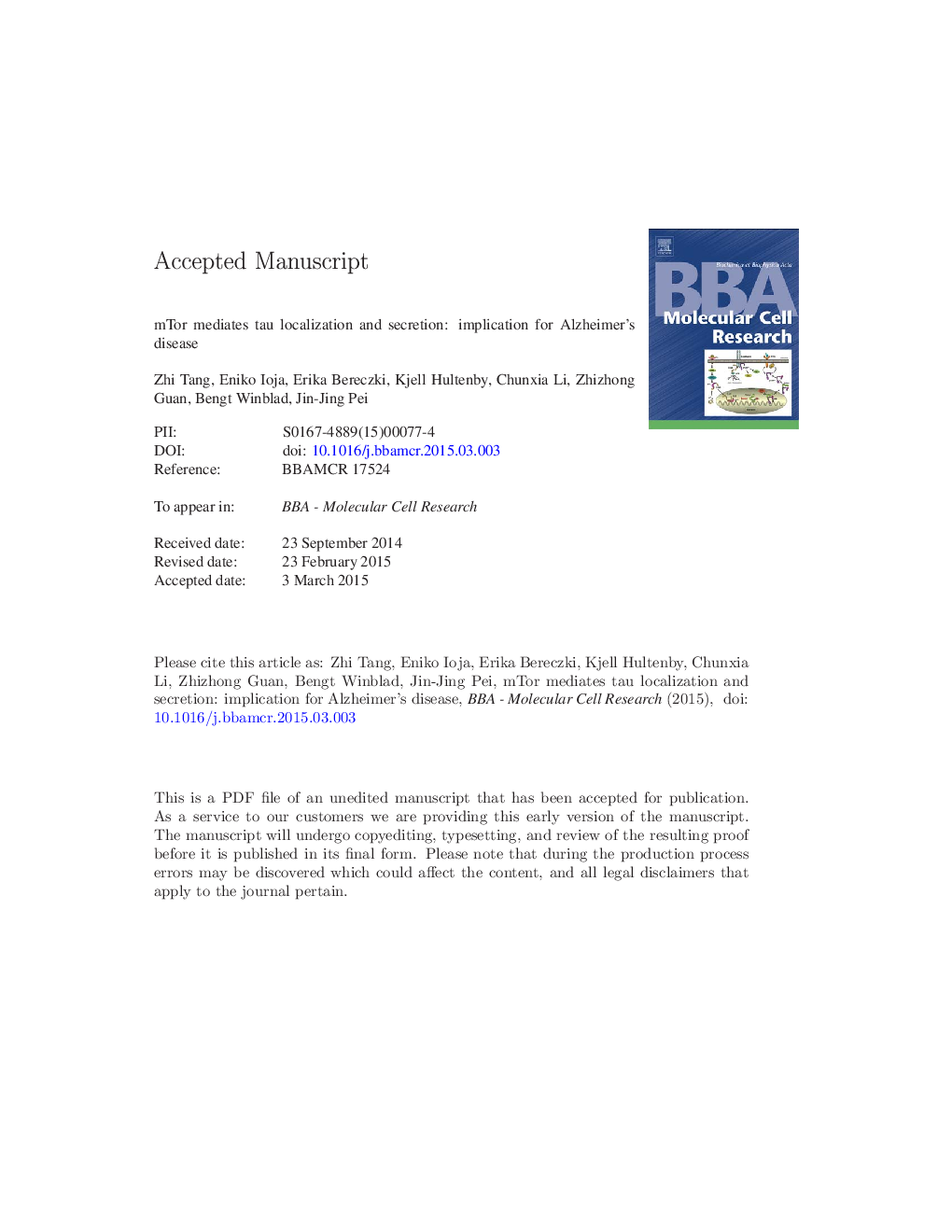| Article ID | Journal | Published Year | Pages | File Type |
|---|---|---|---|---|
| 10802028 | Biochimica et Biophysica Acta (BBA) - Molecular Cell Research | 2015 | 32 Pages |
Abstract
Abnormally hyperphosphorylated tau aggregates form paired helical filaments (PHFs) in neurofibrillary tangles, a key hallmark of Alzheimer's disease (AD) and other tauopathies. The cerebrospinal fluid (CSF) levels of soluble total tau and phospho-tau from clinically diagnosed AD patients are significantly higher compared with controls. Data from both in vitro and in vivo AD models have implied that an aberrant increase of mammalian target of rapamycin (mTor) signaling may be a causative factor for the formation of abnormally hyperphosphorylated tau. In the present study, we showed that in post-mortem human AD brain, tau was localized within different organelles (autophagic vacuoles, endoplasmic reticulum, Golgi complexes, and mitochondria). In human SH-SY5Y neuroblastoma cells stably carrying different genetic variants of mTor, we found a common link between the synthesis and distribution of intracellular tau. mTor overexpression or the lack of its expression was responsible for the altered balance of phosphorylated (p-)/-non phosphorylated (Np-) tau in the cytoplasm and different cellular compartments, which might facilitate tau deposition. Up-regulated mTor activity resulted in a significant increase in the amount of cytosolic tau as well as its re-localization to exocytotic vesicles that were not associated with exosomes. These results have implicated that mTor is involved in regulating tau distribution in subcellular organelles and in the initiation of tau secretion from cells to extracellular space.
Related Topics
Life Sciences
Biochemistry, Genetics and Molecular Biology
Biochemistry
Authors
Zhi Tang, Eniko Ioja, Erika Bereczki, Kjell Hultenby, Chunxia Li, Zhizhong Guan, Bengt Winblad, Jin-Jing Pei,
